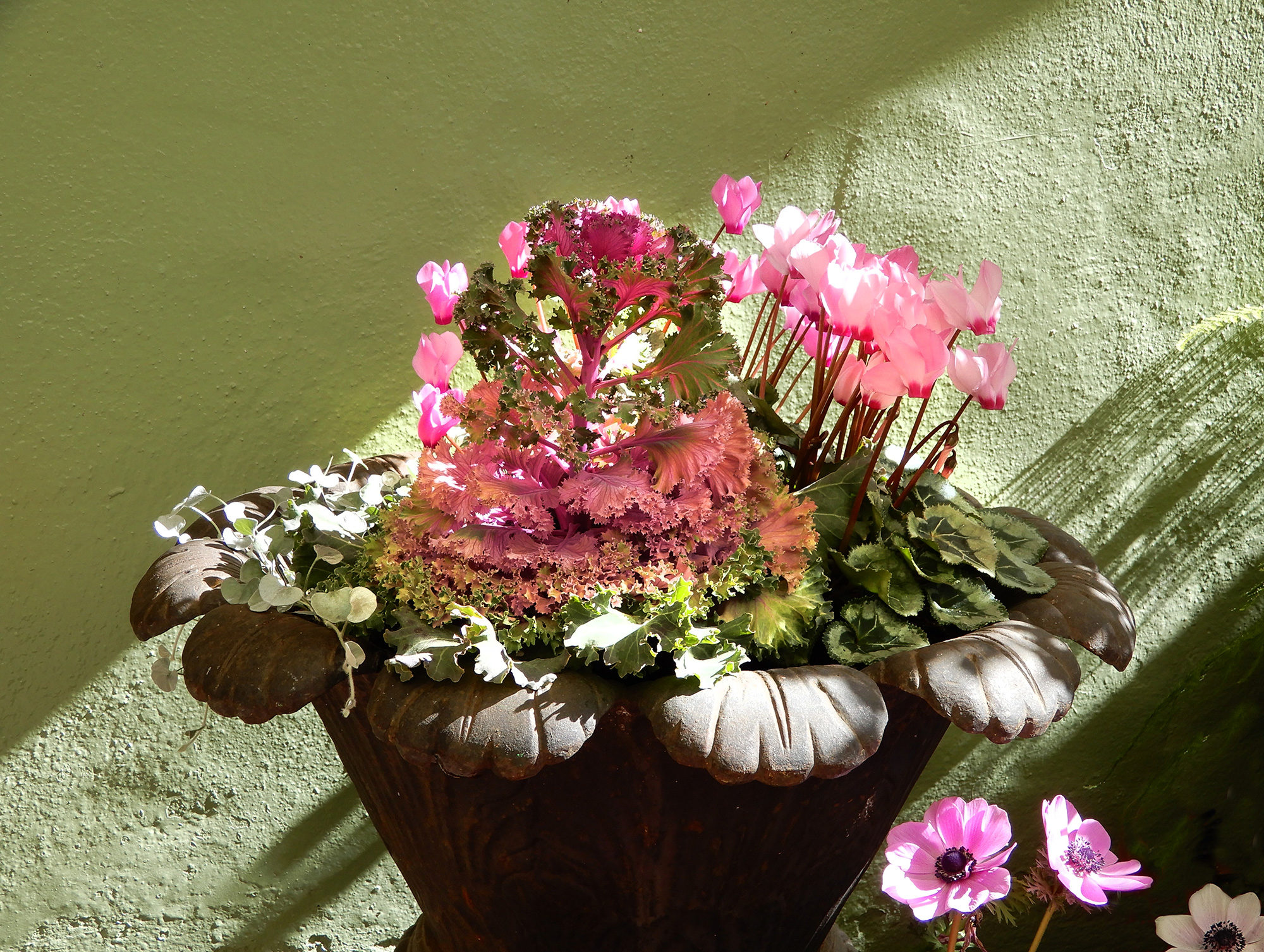King Louis XIV was not the first person to experiment with container gardening, but he certainly had the means. His architect built an elaborate ‘Orangerie’ in the palace at Versailles in 1663. This structure allowed him to move his large collection of plants inside for frost protection during the winter months, then move them back out to the parterre for the warm season.
 Evidence exists that King Nebuchadnezzar built ‘Hanging Gardens’ in ancient Babylonia in 600 BC. One of the seven ancient wonders of the world, according to legend these were baked-brick columns filled with dirt to allow large plantings and trees to root, grow, and in many cases drape downward giving the appearance of hanging. At about that same time, gardeners in China were growing dwarf trees in containers; an art called pun-tsai, which was later adopted and popularized in Japan as Bonsai.
Evidence exists that King Nebuchadnezzar built ‘Hanging Gardens’ in ancient Babylonia in 600 BC. One of the seven ancient wonders of the world, according to legend these were baked-brick columns filled with dirt to allow large plantings and trees to root, grow, and in many cases drape downward giving the appearance of hanging. At about that same time, gardeners in China were growing dwarf trees in containers; an art called pun-tsai, which was later adopted and popularized in Japan as Bonsai.
Why pot? Adequate sunlight can be a challenge for stationary plants, but pots allow you to chase the sun. Mobility and winter protection have always been great reasons to grow plants in pots, but in modern times a more common reason is a lack of space. The pot of chives, the mixed succulent planter, the front porch cymbidium, the miniature fruit tree; these are all popular examples found in small gardens.
Not surprisingly, the two most common pitfalls to container gardening are too much water, or not enough water. Overwatering can happen for a variety of reasons including: drain holes that are too small, a saucer which holds too much water, frequent watering, and perhaps most important, a soil which is not suitable. Don’t succumb to the temptation to dig soil from your garden for pots! You will regret it.
Smaller pots can be susceptible to drastic changes in temperature and soil moisture. Sun on the root zone can also cause damage, and should be considered when situating each pot. Deep watering which saturates the soil mass will help, as will repotting before the roots have become matted. Remember that in all pots there will be a saturation zone at the bottom (don’t add gravel, sand, or pottery shards) and the top layer should begin to dry out slightly between waterings.
Berkeley Hort stocks a wide selection of traditional containers in many different colors and finishes. You’ll find Terra Cotta, Glazed Ceramic, Cedar, and Rice Hull styles. And finally, be open to the pure whimsy of possible containers. Consider an old boot, a coffee pot, wheelbarrow, or horse trough. Anything goes, as long as you follow the basic requirements.



